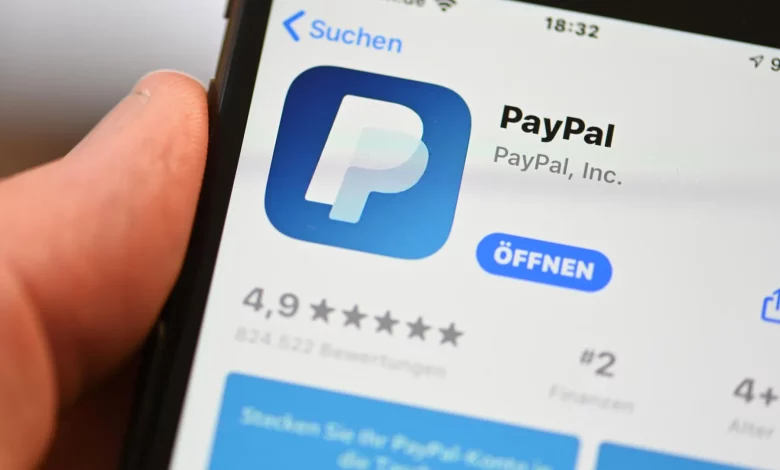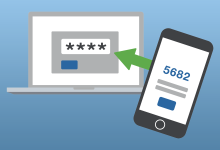
For those who have ever used Paypal or are currently using it, you might have asked the question “Why Does PayPal Put Payments on Hold?”. Well, if that is your case, then we are going to be throwing some light on the issue and give you some tips and ideas on how to prevent this from happening.
That said, we would like to let you know that this issue when it arrives doesn4t probably signify that you have done something wrong.
You might have been there before: You go to send a payment through PayPal, but the money doesn’t go through. Instead, you get a notification that your payment has been placed on hold.
So what’s going on? Why did PayPal put your payment on hold, and what can you do about it? In this article, as earlier said, we’ll answer those questions and more. We’ll also explain what to do if you find yourself in this situation frequently.
What Is PayPal?
PayPal is an online payment system that allows you to pay for goods and services with a few clicks of the mouse. It’s a fast, convenient and secure way to pay for the things you need, without having to share your financial information with the vendor.
When you make a PayPal payment, the money is transferred from your bank account or credit card to the vendor’s account almost instantly. However, there are times when PayPal will put a payment on hold, usually for a few days.
How Does PayPal Work?
When you make a payment through PayPal, the funds are transferred from your PayPal balance or your bank account to the recipient’s PayPal account.
However, before the money is transferred, PayPal places a temporary hold on the payment. This hold is in place to protect both the sender and the recipient of the payment.
The hold is usually for around 21 days, although it can vary depending on a number of factors such as the country of origin, the currency and the type of payment.
Why Does PayPal Put Payments on Hold?

When you send a payment through PayPal, the company may place a hold on that payment. This is a common practice that PayPal uses to protect both buyers and sellers.
There are a number of reasons why PayPal may place a hold on a payment. For example, if the company suspects that the payment is fraudulent, it may place a hold on the payment until it can confirm that the transaction is legitimate. PayPal may also place a hold on a payment if it needs more information from the buyer or seller to complete the transaction.
If you’re a buyer, be sure to provide accurate information when you send your payment. This will help avoid any delays with your payment. If you’re a seller, make sure to provide clear and concise instructions to your buyers so they know what to do if they need to send you payment through PayPal.
Why are my funds inaccessible or on hold?
PayPal may place a hold or restrict your account activity if we need a little more information from you about a transaction, your business or your account activity. Some of the reasons why we might need this information include:
a) You’re a first-time seller. When you’re a new PayPal seller, it takes time to build up enough history to demonstrate a pattern of positive buyer-seller transactions. The good news is you can usually move out of this status by confirming your identity and building up a history of positive selling activity.
b) You haven’t sold in a while. When your selling activity has been dormant for a long time, it’ll also take time to rebuild a history of positive buyer-seller transactions.
c) Multiple customers filed for a refund, dispute, or chargeback. If numerous customers file for a refund, dispute or chargeback, it can delay the availability of your funds. The best way to resolve this is to work directly with your customers to prevent or solve, disputes and chargebacks. Sometimes it’s possible your customer filed for a refund, conflict, or chargeback because someone illegally used their PayPal account to buy something. We ask that you hold off on shipping any items when this happens.
d) Your selling pattern appears unusual or changed. An unusual sales activity includes a recent spike in sales or a change in your average selling price, business platform or type of item being sold.
e) You’re selling higher-risk items. Higher-risk items can include tickets, gift cards, consumer electronics, computers and travel packages. You can also read our User Agreement for more information on other holds and reserves we may place on your account.
How to Avoid Having Payments on Hold With PayPal
There are a few things you can do to avoid having payments put on hold with PayPal. If a buyer pays you and the payment isn’t immediately available, Paypal will notify you via an email titled “An important message about your PayPal balance” or via an alert on your Account Overview page. This email or alert will be the best source of information about why your payment isn’t available and what you may be able to do to prevent the delay of available funds in the future.
- First, make sure you’re providing all the required information when you’re setting up your account. This includes things like your legal name, address, and date of birth.
- Also, verify your email address and phone number. PayPal will use these to contact you if there’s ever an issue with a payment.
- Setting yourself up for success by posting actual photos and detailed, accurate descriptions of items so buyers know exactly what they’re getting.
- Being clear about shipping and handling time, costs, and methods; processing orders promptly to avoid delays.
- Packing items carefully with appropriate, quality packing material, so customers receive the items in good condition.
- Uploading tracking information of our supported carriers or printing a USPS/UPS shipping label through PayPal.
- Connect your bank account or debit/credit card to your PayPal account. This will help PayPal verify your identity and make sure there are funds available to cover any payments you make.
- fourth, don’t try to use PayPal for any illegal activity. This should go without saying, but it’s worth mentioning because it can lead to payments being put on hold or even your account being shut down completely.
Set up a customer service message:
Also, setting up a customer service message in the Resolution Center may help to prevent disputes. For example, if shipments will be delayed because of a hurricane in your region, letting the buyer know may answer their question and make a dispute unnecessary.
Communicate and work with your customers:
When customers contact you, do your best to be responsive and helpful. Working with customers early on can prevent a minor issue from ballooning into a much larger problem, and following the guidelines listed previously will help to reduce the number of buyer disputes, claims, and chargebacks. If you are involved in a buyer dispute, start working to resolve it right away. Frequent, honest, and open communication with the buyer via the Resolution Center can help clear up any misunderstanding.
If you follow these simple tips, you’ll be less likely to have payments put on hold with PayPal.
What to Do if Your Payment Is on Hold With PayPal
If you find yourself in this situation, don’t panic. There are a few things you can do to try to get your payment released. Your funds are usually held for up to 21 days. However, there are several things you can do to expedite this timeline.
First, check to see if you’ve completed all of the necessary requirements. If not, PayPal may be holding your payment until you do. For example, if you’re selling an item, make sure you’ve shipped it and provided tracking information.
If you have fulfilled all of the requirements and your payment is still on hold, your next step is to reach out to PayPal customer service. You can do this by logging into your account and clicking on the “Help & Contact” link at the bottom of the page. From there, you’ll be able to either call or message customer service and hopefully get a resolution.
And that’s everything you need to know about PayPal payments being put on hold.
What you can do to access your money sooner.
Assuming there are no issues with the order, you may be able to expedite the release of temporarily unavailable funds sooner than the scheduled 21 days by taking any of these actions from your PayPal account:
| Action | Time to release | What you need to do |
| Print a USPS or UPS shipping label | 1 day after delivery | Print a USPS or UPS shipping label from your PayPal account. This will automatically update your tracking information and delivery confirmation. |
| Add tracking information | 1 day after delivery with supported carriers. See the chart below for supported carriers. | Upload a supported carrier’s tracking number. PayPal will release the payment within three days of the carrier confirming delivery. |
PayPal Supported Carriers in the United States as of June 18, 2020:
- DHL eCommerce US
- DHL Express (Piece ID)
- Echo
- Ensenda
- Expeditors
- FedEx
- Globegistics Inc.
- MailAmericas
- Newgistics
- OnTrac
- RL Carriers
- RRD International Logistics U.S.A
- UPS
- USPS
FAQs About PayPal Payments
Now that you know more about why PayPal might put a payment on hold, you might have some questions about how this whole process works. Let’s take a look at some frequently asked questions about PayPal payments.
- – How long does PayPal usually take to release a payment?
It can take up to 21 days for PayPal to release a payment, although in most cases it is released within a few days. If you’re unsure about when your payment will be released, you can always contact PayPal customer service for more information.
- – Can I request that my payment be released early?
Yes, in some cases you can request that your payment be released early. However, there is no guarantee that PayPal will honour your request.
- – What if I need the money from my PayPal payment right away?
If you need the money from your PayPal payment right away, you can try contacting the person or company who made the payment and asking if they can send you a different form of payment. Alternatively, you could try requesting an early release of the payment from PayPal.
Conclusion
All in all, PayPal’s decision to put payments on hold may seem frustrating, but it’s actually a good thing. By taking the time to review each transaction, PayPal is able to protect both the buyer and the seller. So, next time your PayPal payment is on hold, don’t panic—just know that PayPal is working to keep your money safe.








